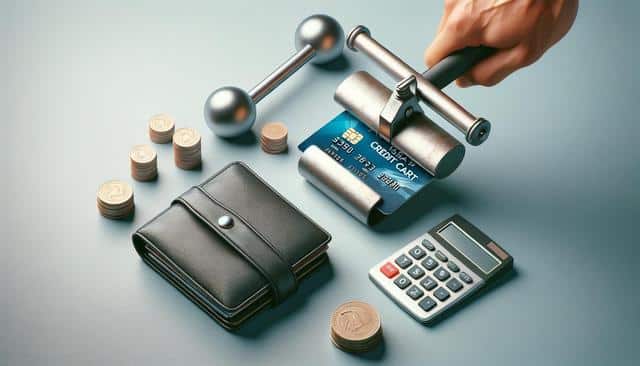
Drowning in Credit Card Debt? Here’s How to Find Relief Quickly
Understanding the Types of Debt Relief Available
When dealing with overwhelming credit card balances, it’s essential to know the various types of debt relief available. Each option is designed to meet different financial needs, depending on the severity of your debt and your current income situation.
Some of the most common types of debt relief include:
- Debt management plans (DMPs): These involve working with a credit counseling agency to consolidate payments and negotiate reduced interest rates with creditors.
- Debt consolidation loans: This option combines multiple debts into a single loan with a potentially lower interest rate.
- Debt settlement: A negotiation process where a third party works with creditors to reduce the total amount owed, typically in exchange for a lump-sum payment.
- Bankruptcy: Considered a last resort, bankruptcy can discharge most unsecured debts but comes with long-term financial consequences.
Choosing the right path depends on your specific financial goals and how much debt you’re carrying. Speaking with a financial advisor or debt relief specialist can help you identify the most appropriate option.
How Debt Relief Works
Debt relief services operate by intervening between you and your creditors. Their goal is to help you lower your monthly payments, reduce interest rates, or even decrease the total amount owed. Understanding how debt relief works can help you navigate the process more confidently.
Here’s a general overview of how many programs function:
- You start by assessing your total debt and monthly income.
- A debt relief representative evaluates your situation and recommends a suitable program.
- Once enrolled, they may negotiate with creditors to adjust your payment terms.
- You begin making a single monthly payment to cover your debts under the new plan.
- Over time, you gradually reduce and eliminate your outstanding balances.
While the process may vary slightly depending on the service provider, the end goal remains the same: to help you regain control of your finances and avoid further financial distress.
Who Can Benefit from Debt Relief
Debt relief isn’t a one-size-fits-all solution, but it can be highly effective for many individuals. Understanding who can benefit from debt relief is crucial in determining whether it’s the right step for you.
You may benefit from debt relief services if you:
- Have high-interest credit card debt that you struggle to manage month to month
- Are falling behind on payments or only able to make minimum payments
- Have experienced a loss of income or increase in essential expenses
- Are facing frequent calls from creditors or collection agencies
- Want to avoid bankruptcy but need a structured plan to get back on track
Debt relief can also be a practical option for those who feel overwhelmed by their financial situation and need professional guidance to move forward.
The Benefits of Debt Relief Services
Choosing to work with debt relief professionals offers several potential advantages. The benefits of debt relief services go beyond monetary savings—they can also positively impact your overall well-being.
Key benefits include:
- Reduced interest rates, which can lower the total amount you need to repay
- Consolidated payments, making it easier to manage your monthly budget
- Fewer late fees and penalties
- Improved credit over time as debts are paid off
- Peace of mind from having a clear plan in place
Additionally, many individuals report feeling less stress and anxiety once they begin a structured debt relief program. The process of taking control of your finances can be empowering and help you build healthier financial habits for the future.
Real Stories: Success with Debt Relief
Hearing how others have navigated their way out of debt can be both inspiring and educational. Real stories: success with debt relief often highlight the emotional and financial transformation that comes with taking action.
For example, one individual shared how they were juggling five credit cards and barely keeping up with minimum payments. After enrolling in a debt management plan, their interest rates were significantly reduced, and they were able to pay off $15,000 in debt over four years. Another person used a debt settlement service and successfully negotiated a 50% reduction in the total amount owed, allowing them to become debt-free in just over two years.
While results vary depending on individual circumstances and the program chosen, these stories demonstrate that progress is possible. If you’re wondering what you need to get started, most services require basic financial documents, such as credit card statements, proof of income, and a list of monthly expenses. With these in hand, you can begin exploring your options and take the first step toward financial recovery.
Conclusion: Taking Steps Toward Financial Stability
Managing credit card debt doesn’t have to feel like an impossible task. By exploring the types of debt relief available and understanding how debt relief works, you can find a strategy that fits your needs. Whether you’re just beginning to struggle with payments or have been overwhelmed for years, debt relief services may help you regain control.
For anyone asking who can benefit from debt relief, the answer is clear: those ready to make a change and commit to improving their financial health. The benefits of debt relief services can be both immediate and long-lasting, from reduced stress to improved credit scores. And with countless real stories: success with debt relief, it’s evident that recovery is possible.
To begin, gather your financial information and speak with a reputable service provider. Knowing what you need to get started is the first step on your journey to a more stable and secure financial future.


